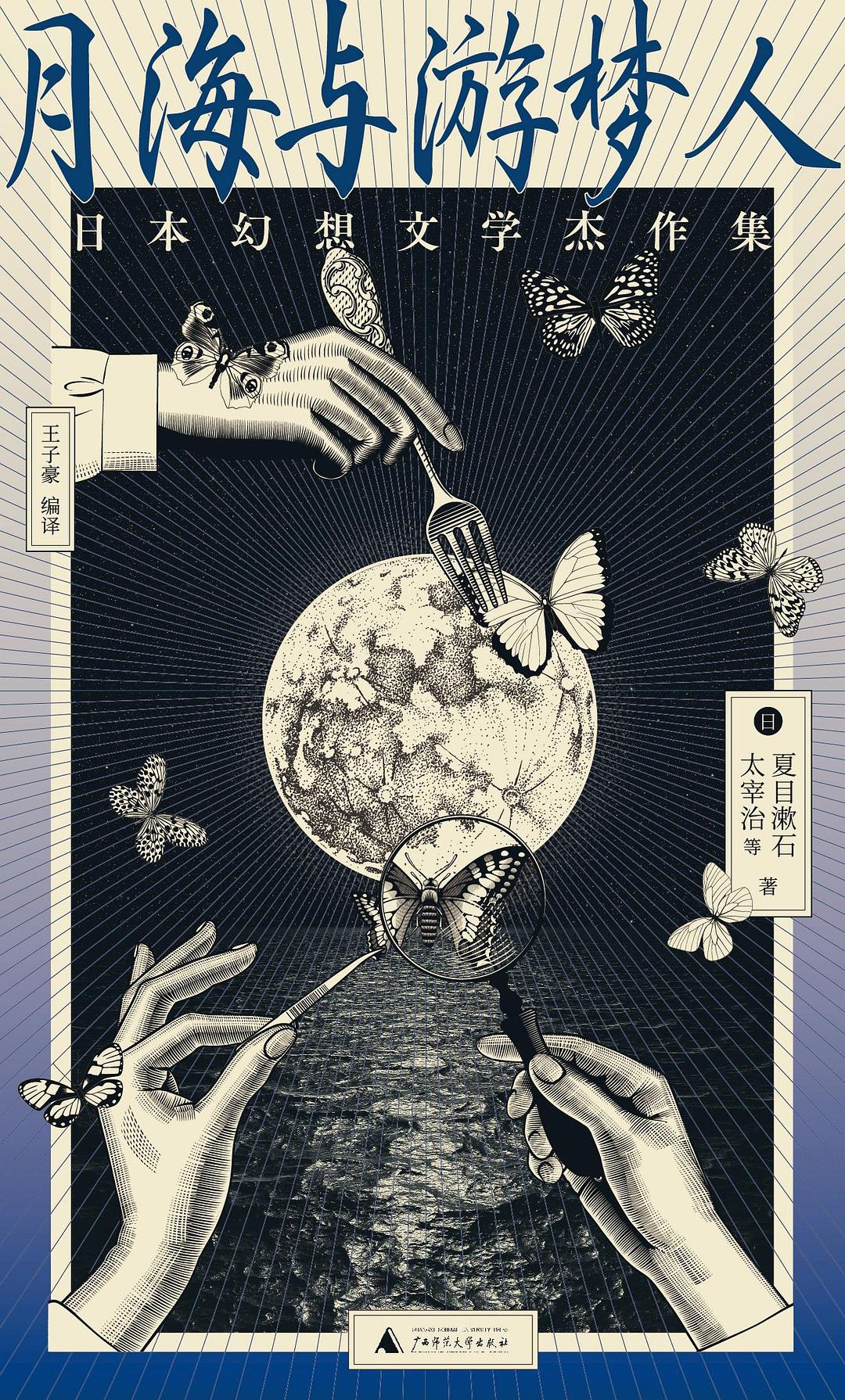WULOLIFE
《月海与游梦人》作者: [日] 夏目漱石 / [日] 太宰治 等 出版社: 广西师范大学出版社
《月海与游梦人》作者: [日] 夏目漱石 / [日] 太宰治 等 出版社: 广西师范大学出版社
Couldn't load pickup availability
Description
内容简介· · · · · ·
“美的描摹与诞生,如同一枕未竟之梦。”
🌙🌏
一頁·日本幻想文学大系开幕篇!
必携!24位不朽文豪讲述的东方奇谭
从夏目漱石、太宰治、三岛由纪夫,到泉镜花、芥川龙之介、江户川乱步
一网打尽日本历代文豪的集大成之作
Description:
扶桑最古之神话《古事记》
《梦十夜》明治巨擎恢诡谲怪之名作
宫崎骏灵感原点、稚童与龙女的“神隐传说”《龙潭谭》
战后日本最摩登无赖却尽得古典风流的《盛开的樱花林下》……
精心选篇,新锐译本,横跨千年的幻想文学宝库
🦋编辑推荐
★ 上承王朝物语,
一頁·日本幻想文学大系开幕篇!
《月海与游梦人》共收录24篇恢诡谲怪之名作,以年代划分,终至昭和战后文豪。
由大和王权草创期的记纪神话、平安时代的王朝物语,到江户町人文化的井原西鹤、上田秋成等浮世草子巨匠;从明治·大正的泉镜花、幸田露伴,至昭和·战后的江户川乱步、太宰治、三岛由纪夫等不朽文豪。
24位游梦人,见证上古、明治、大正、昭和的「逢魔时刻」。
★ 幻妖的物语,曲折荒诞、光怪陆离,在现实与异想天开间弥漫
的是百妖幻行,其剖开的却是人心、世相、真情
太宰治说:摹写那些世上无人知晓、难以名状的诡谲现实,才是一个作家存在的价值。
《古事记》中男女两位创世神在常世和黄泉的对峙;《今昔物语集》众多因果轮回、生灵证法的故事;内田百间的《件》则绘出无尽的荒野、周期性出现的月亮、当意味不明的人墙和吐露人言的兽展开对峙,“人类”的概念渐渐模糊……
眨眼间被猫咪占领的电气小镇、插满赤茱萸的全知之眼……梶井基次郎、坂口安吾、太宰治、江户川乱步、三岛由纪夫、梦野久作,他们开始向人体内部探求,将种种肉身的部件的现代幻境美感。
梦幻的情致尽数消散在世情人俗中。
★美的描摹,突破常规:幻想文学中令人惊奇的想象巅峰,为现当代艺术提供取之不竭的灵感源泉
文学艺术爱好者不可错过的珠玉一册
《夏目友人帐》《元气少女缘结神》等大热动画中频频登场的万神百鬼,其真实面貌就出自扶桑最古神话《古事记》……
作为近代幻想文学的双璧,泉镜花的《龙潭谭》带来稚童与龙女的“神隐”传说,成为宫崎骏征服世界影迷的灵感之源;谷崎润一郎的《魔术师》则在这个边境线上为潘神创造了不知名的国度,流浪的牧神终于在此犄角勾连,永不分离……
★ 新锐译者倾情译介 × 月海设计妖冶尽现
全新编译精装版,永藏梦与幻想之瞬间
涩泽龙彦、稻垣足穗的实力译者王子豪倾情编译,遍寻日本文风充满华丽的凉感。
视觉呈现上,设计师汐和巧妙使用海上月球、手与蝴蝶元素,设计感十足。
Film
🌊内容简介
“美的描摹与诞生,如同一枕未竟之梦。”
一頁·日本幻想文学大系开幕作。从大和王权草创期的记纪神话、平安时代的王朝物语,至江户町人文化的井原西鹤、上田秋成等浮世草子巨匠;从明治·大正的泉镜花、幸田露伴,至昭和·战后的江户川乱步、太宰治、三岛由纪夫等22位不朽文豪;跨越日本千年,全新编译幻想文学杰作24篇。
“在那些梦中风景里,一切都沾染上鲜艳的原色,大"
作者简介· · · · · ·
【作者】
夏目漱石,被称为“国民大作家”。
太宰治,日本近代小说家,战后无赖派文学代表作家.
谷崎润一郎,日本近代小说家,唯美派文学主要代表人物之一,曾7次提名诺贝尔文学奖。
幸田露伴,日本小说家,获日本第一届文化勋章。
泉镜花,跨越日本明治、大正、昭和三个时代的伟大作家。为纪念他的文学成就,日本设有“泉镜花文学奖”。
【编译】
王子豪
97年生人,蛇饱国井蛙馆在驻译术工作者。与小猫麦麦生活在北京。
豆瓣名:亜空。译有《龙彦之国绮谭集》《恶魔幻影志》《日本妖怪化物史》《一千一秒物语》。
